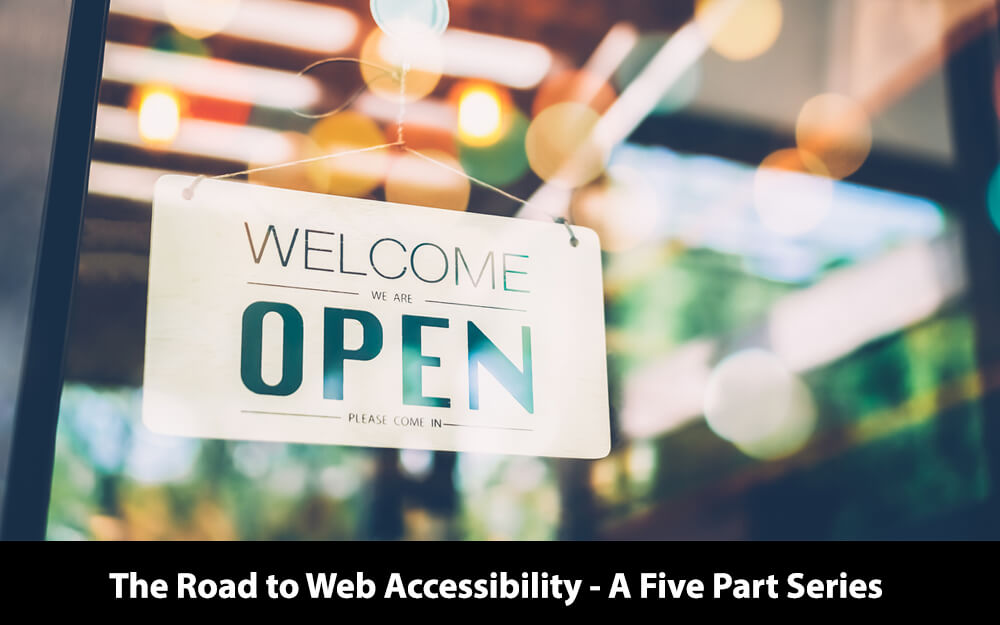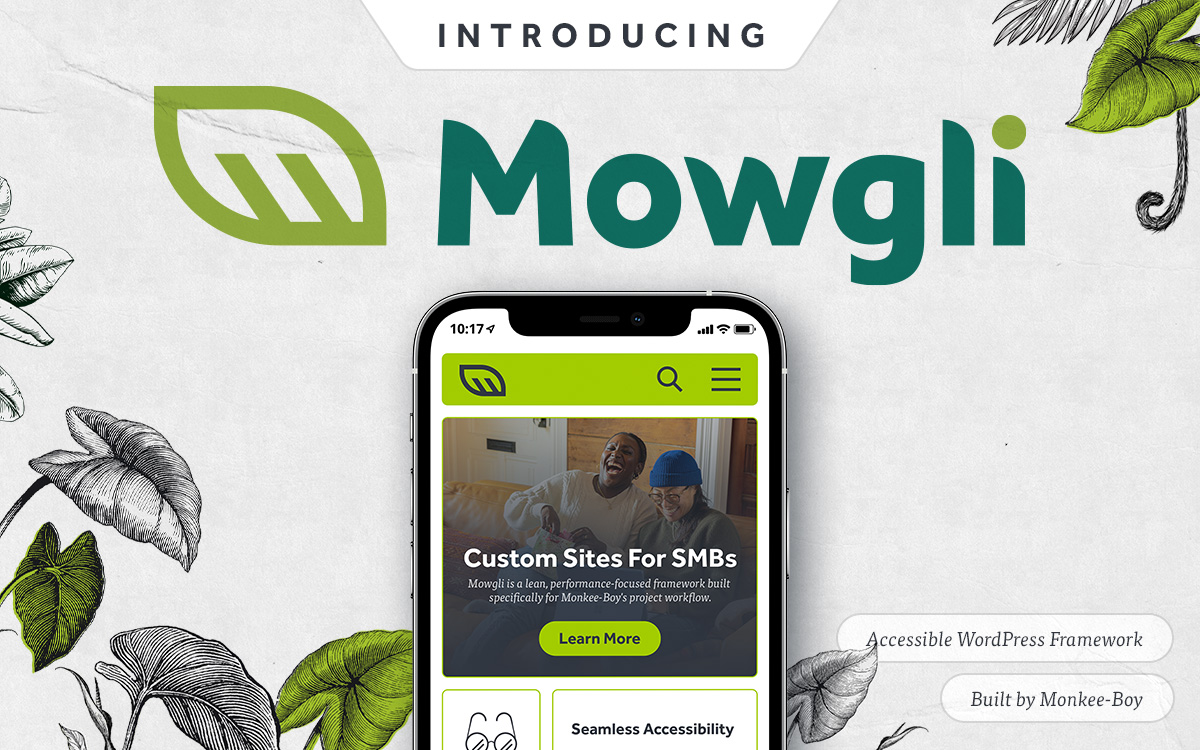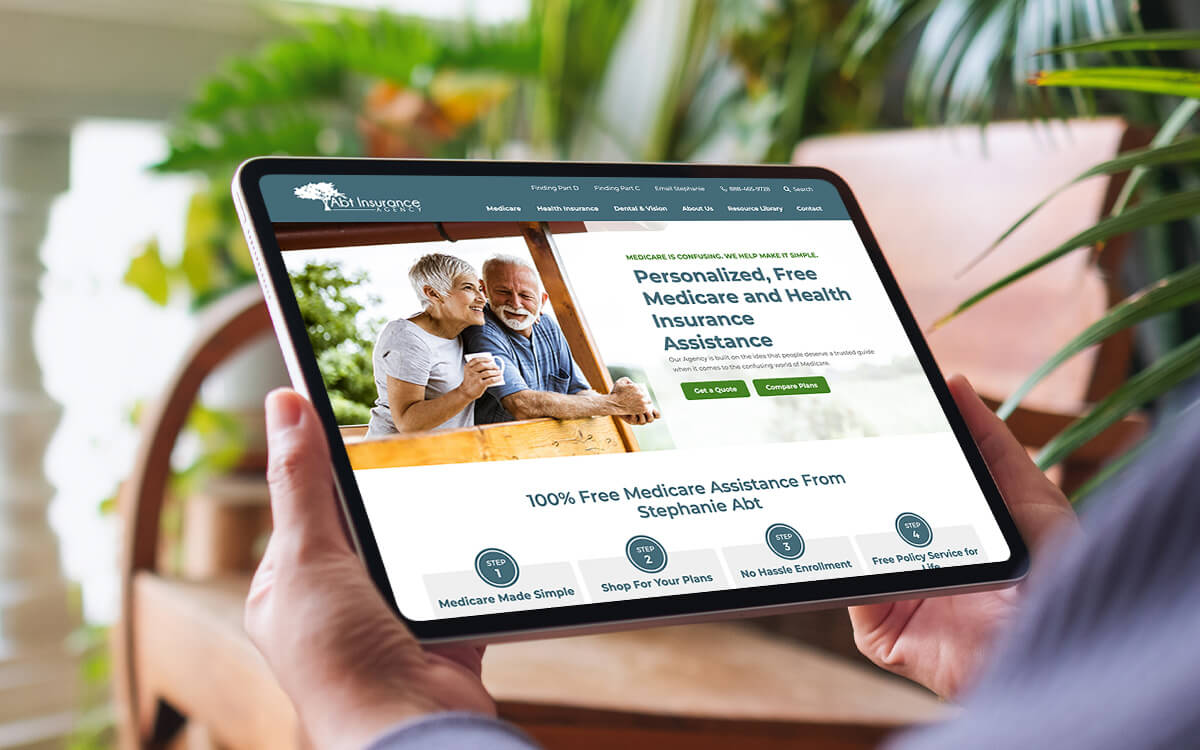The Road to Web Accessibility - A Five Part Series

If you’re reading this, you’re most likely just starting your journey into web accessibility and looking for a clear path forward. If so, good news — you’ve come to the right place. In this article, we’re going to break the journey ahead of you into five “easy" steps and use simple, non-technobabble language along the way. Our goal is to help educate you on your journey and allow you to build a strong foundation for your new inclusive digital experience.
Let’s begin with proper expectations
Like any worthwhile journey, this road is not without its ups and downs and twists and turns. Every organization is different, has different players, different regulations, different websites, different content, functionality...the list goes on. Each of these ingredients is unique to your organization and season your proverbial accessibility soup. This means it is important to “keep it real” and acknowledge that your journey may not be a straight one from point A to B. It may not be a short trip. It may have pit stops and tire changes and detours along the way.
This is OK, and expected.
Take a moment and reflect on the path you have chosen. This is an amazing undertaking that you're considering. Every step forward is positive progress and every wrong turn will help you define the right path for your organization. Web accessibility is not as complicated or as scary as some might think - we promise. It is, however, truly a journey and not a destination. As you learn more, you will see how far you have come, how much you have to learn, and yes, how far you have yet to travel.
So, buckle up, and let’s begin.
Step 1: Get The "Green Lightbulb"
The first step on the road to building a more inclusive digital experience consists of overcoming the two biggest accessibility blockers in most organizations: ignorance and stakeholder buy-in.
Conquering Ignorance
Ignorance may sound like a fairly harsh word, but it is fairly accurate. Most organizations are simply unaware that web accessibility even exists. Many of us have heard of ADA and have a basic understanding of how accessibility guidelines impact the physical world (e.g. wheelchair ramps, handle rails, elevators, brail menus/wayfinding, etc). In most cases, however, organizations are unaware of how this translates to the digital world we now all live in.
First Reactions
After introducing the topic of inclusivity, there are typically two reactions.
Resistance: In this situation, someone inside the company will respond by saying "Really? Blind people can’t use the web... show me how many blind people come to my website." or "I don’t think we need that. It doesn’t really apply to our business." It’s new to them, and they may already be a bit overwhelmed with a standard redesign project, so we get it — accessibility is just one more thing they haven’t planned for. With little room left for surprises in an already scary project, it can be hard to fully understand the value and see the bigger picture.
Amazement: The second reaction is wide-eyed amazement. The organization's leadership is immediately intrigued, gets it, and can see how accessibility adds a different dimension to the project. These companies see accessibility as a must-have that will help both protect and differentiate their business.
Game on!
Deconstructing Web Accessibility Ignorance
Regardless of the initial reactions, organizational ignorance ultimately boils down to answering four main questions:
- What is web accessibility?
- How many people does it truly impact? (Spoiler alert: many more than you might imagine)
- What value can it bring to our organization?
- What is the path forward to close the gap? This can include clarity on organizational changes, budgeting, and timelines.
When these questions are asked and answered, the lightbulbs go on and the ignorance fades. Accessibility becomes a more comfortable topic of conversation and begins to enter into the routine discussions related to digital experiences.
Conquering Stakeholder Buy-in
After this "aha" moment, the next challenge is coming to a consensus to move forward.
For smaller organizations with fewer decision-makers, buy-in discussions might be easy and elegantly dove-tail as part of the initial engagement conversations. For other, larger organizations, a more intensive set of discussions may need to take place. These bigger organizations have more dependencies and legacy thinking to overcome. Obstacles like coming to grips with other investments that did not include accessibility considerations (and may require rework), budget scheduling and availability, the timing of implementation, and internal communication of new directions they may now want to take all become more complicated.
We've heard terms like "it's like trying to turn a battleship" before — we get it. The length of this part of the process will vary widely for each organization, regardless of size and whether it involves adding 2 or 200 more people into the conversation, justifying increased investment or longer timelines, gaining full board approval, or arm wrestling with procurement.
Again, any recalibration is a win, so don't get discouraged simply because it might take a little bit longer to find and throttle towards your new true North.
Pro Tips:
- Formalize Web Accessibility as a Requirement: We have put together a great article to help justify why web accessibility should be a formal requirement. Understanding the immediate benefits (e.g. greater reach, better experience, improved performance) and mitigating potential threats (i.e. increasing litigation related to inaccessible experiences) will help the conversation.
- Start Small: There are different levels of web accessibility conformance (WCAG Level A, Level AA, and Level AAA) and there are also ways to hit interim, less formal levels like A+ and AA+. Again, this is a journey, and your organization might need to take smaller steps at first — this is fine! As mentioned, any forward progress is just that — progress. If your organization wants to start small and grow into it, that is certainly an option for consideration.
- Get a Second Opinion: Sometimes seeking out a qualified, 3rd party to offer guidance can remove the burden of delivery and justification from your team. If you need help here, please let us know as we’re very happy to help demystify and help underscore how web accessibility delivers a clear value.
Regardless of what velocity your organization might be ready to forge ahead, when an organization embraces accessibility and decides it’s the right thing to do, most of the biggest hurdles disappear and you get a green light.
Enter The Green Lightbulb
With a dedicated push towards intentional accessibility by your organization, we have a vehicle in place for movement and for progress. To add to this, everyone is on board, buckled up, and ready to go. Fantastic! This is an exciting moment when the "green lightbulb” appears. It is the combination of the “lightbulb of awareness” and getting the “green light” from senior stakeholders and decision-makers. The engines are revving and we’re clear to proceed. It’s an awesome thing.
Latest Articles

Introducing Mowgli - Monkee-Boy's Accessible WordPress Framework
Get to know Mowgli - Monkee-Boy's new accessible WordPress framework that transforms the landscape of custom web design for small-to-medium businesses.
Continue reading
Mowgli Helps Abt Insurance Escape the Digital Jungle
Abt Insurance was built on the idea of trust when navigating the world of insurance and expect the same from their digital experience. Monkee-boy has that covered!
Continue reading